The best marmalade recipe from Mamé Clairette
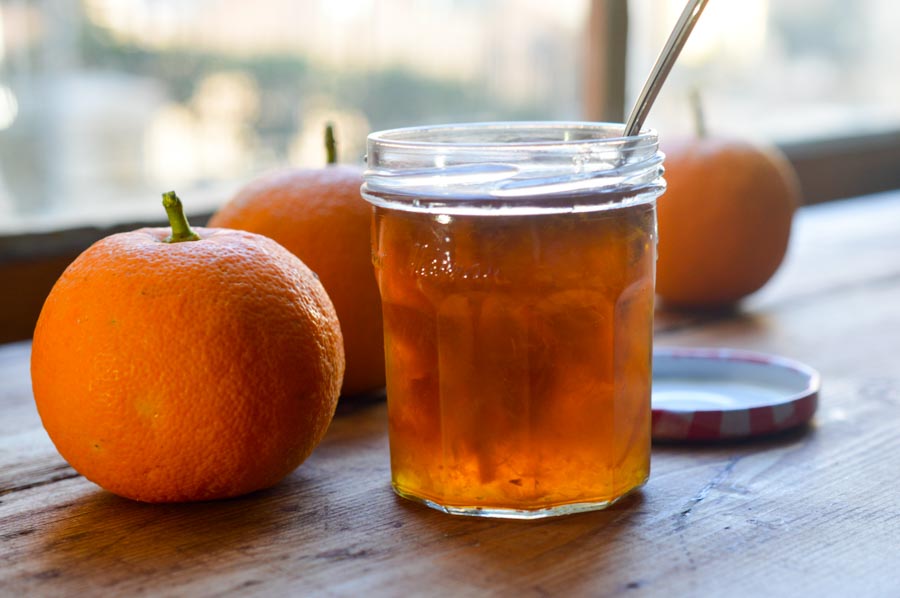
Like liver or sardines, marmalade is a divisive food. Those who love it — myself included, as you might have guessed — consider it the queen of jams, thanks to its delicate balance of sweet and bitter. But even in Nice, where bitter oranges (also known as Seville oranges) grow so prolifically that they often fall to the ground ignored, marmalade has its haters. Last year I offered a jar to an elderly neighbor, hoping to put a smile on her face, only to be met with a horrified look and the words “I would never eat that.”
There are some good marmalade recipes to be found on blogs, including one by the incomparable David Lebovitz and a rather intricate variation on Simply Recipes, but nothing would make me trade in the recipe I’ve been using since I first came to Nice. It comes from the cookbook Cuisine traditionnelle du pays niçois, which is my bible of Niçois cooking. Written by Bernard Duplessy, it’s a tribute to the now-deceased Mamé Clairette, who once ran an auberge in the hills behind Nice.
Her bossy yet endearing way of recounting recipes reminds me of my neighbor Marie from my years in the Old Town. Whether stewing tripes à la niçoise for 12 hours, stuffing sardines with Swiss chard and onions, or baking pumpkin tian, she often made enough to feed us and several other lucky neighbors. When I once commented on the deliciousness of her tomato sauce, she retorted “It’s normal! What would you know about buying tomatoes?”
Marie and I usually made our confiture d’oranges amères around the same time and compared the results. Imagine my shock and pride when, having declared with typical cockiness that my jam didn’t stand a chance against hers, she admitted defeat and asked me for the recipe!
The secret to my marmalade is to soak the seeds in water for a couple of days, which extracts their pectin and creates the wobbly orange jelly so coveted by marmalade lovers. I prefer this method to that of enclosing the seeds in cheesecloth and adding them to the pot, if only because cheesecloth is something that always eludes me in France. Then it’s just a question of patience, since this recipe is a three-day process, with the time-consuming parts happening on the first and third days.
This year I plan to make an extra batch with these beautiful citrus fruits from Le Potager de Saquier, one aptly named main de Bouddha, or Buddha’s hand, and the other cédrat, or citron in English. Since neither has much juice, they are best candied or made into jam, which provides the added satisfaction of using the entire fruit.
On Saturdays you can find Pierre and his son at the Cours Saleya market, selling unusual citrus fruits in winter such as Tahiti limes and many other hard-to-find fruits, vegetables and herbs. They are most famed for their heirloom tomatoes in summer, but that seems a long way off — not that I’m complaining with so much citrus fruit to preserve.
Seville orange marmalade
(Confiture d’oranges amères)
Makes about 12 jars
The only change I have made to Mamé Clairette’s recipe is to cut the oranges in half before slicing them, which makes them easier to seed and creates more manageable pieces in the finished marmalade. The sugar quantity seems enormous because the fruit is weighed with the liquid once it has boiled for the first time. However, the finished jam will not be overly sweet.
12 to 13 Seville oranges (bitter oranges)
1 sweet orange
2 lemons
Enough water to cover the fruit, about 2.5 to 3 quarts (or liters)
5-6 kg of cane sugar, depending on the size of your oranges
Slice the oranges and lemons in half lengthwise, then into thin horizontal slices, removing the seeds as you slice and placing them in a bowl.
Place the orange and lemon slices in the biggest bowl you can find (or two bowls) and cover them with water (I use filtered water). Cover with a plate and set aside in a cool place overnight. Cover the seeds with water and set aside, covered, in the refrigerator.
The next day, pour the fruit and its water (but not the seed water) into a large saucepan or copper jam basin. Bring to a boil and let the mixture bubble at a steady boil for 40 mins, stirring occasionally. Let this mixture cool, then weigh it and return it to a cool place to rest overnight. You will need the same weight in sugar, so now is the time to buy it!
The next day, place the fruit with its water, the strained seed water and an equal weight of sugar in a large saucepan or jam basin. Bring to a boil, then let it boil steadily for about 1 to 1 1/2 hours, stirring occasionally, until the syrup thickens slightly. To test the marmalade, pour a little onto a small plate that you have chilled in the freezer, then wait a minute. Tilt the plate and if the syrup wrinkles, it’s time to transfer the marmalade to jars.
Meanwhile, you will have sterilized your jars. I wash mine well in soapy water, rinse them and place in a 350 F (180 C) oven to dry for at least 20 mins. It’s not the most orthodox method, but it’s easy and has never failed me yet.
Fill the jars nearly to the top and close the lids as soon as you can. The marmalade could keep for years or perhaps days, depending on how many marmalade-lovers you know.


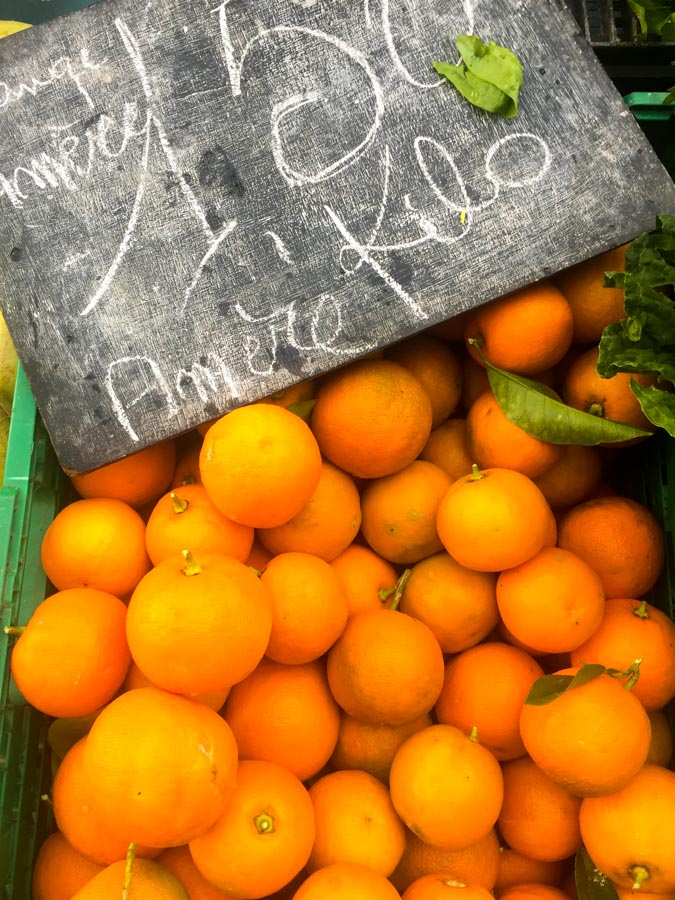
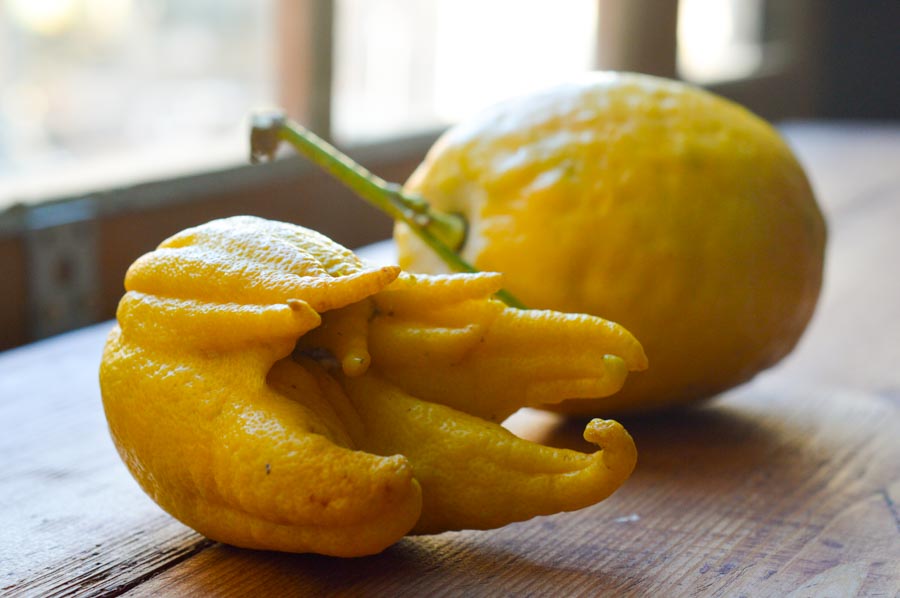
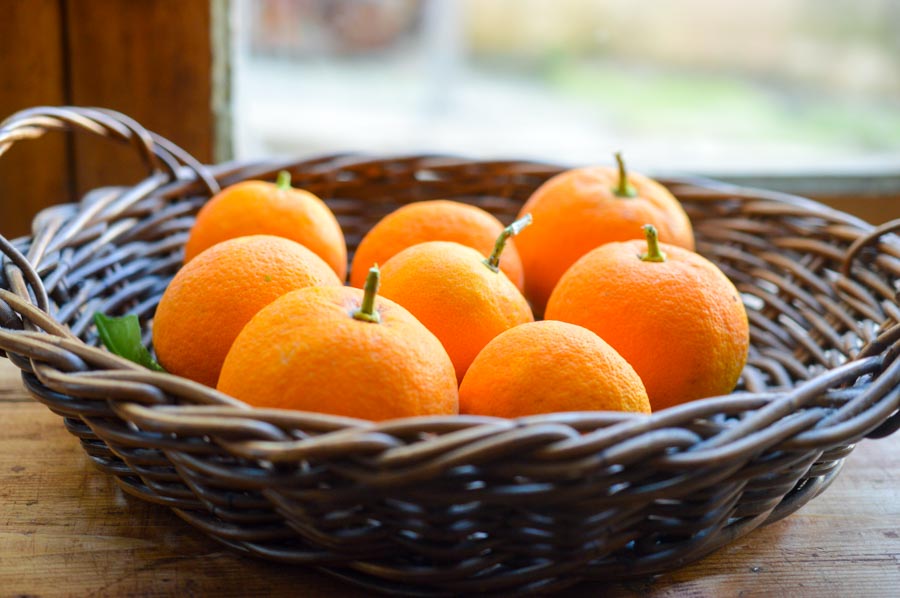
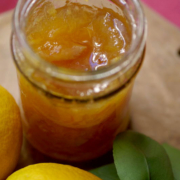
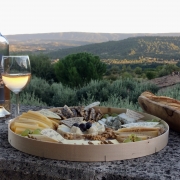
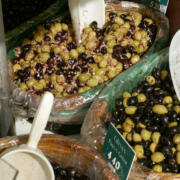


Leave a Reply
Want to join the discussion?Feel free to contribute!